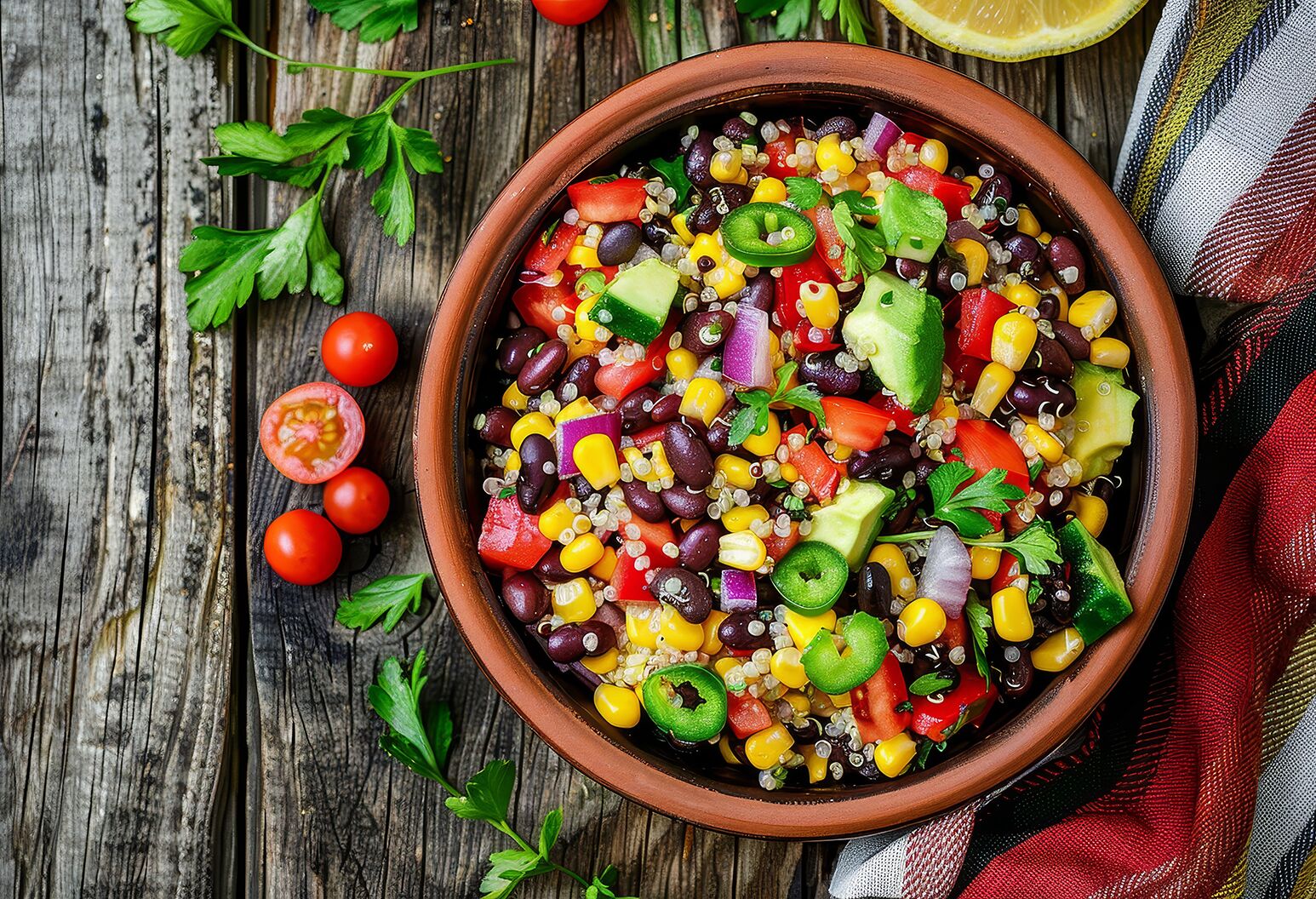healthy living/fitness
Balsamic Chicken And Jicama Slaw: A Perfect Match

Learn the difference between complete and incomplete proteins.
3 min read
People often lump all proteins into one big, nutritious basket, but they’re not all created equal. Understanding the difference between complete and incomplete forms can be a game-changer, especially for vegetarians and vegans.
Proteins are the building blocks of life and the superheroes of a healthy diet. They aid with building muscle, repairing tissues, and producing enzymes and hormones. Complete proteins contain all nine essential amino acids that our bodies need, while incomplete proteins lack at least one.
Our bodies can’t produce these amino acids on their own, which means we need to get them from our food. Without enough complete proteins, you might feel like your energy is zapped, or you’re catching every bug that goes around.
So how can you tell what type of protein you’re consuming? Complete proteins include meat, fish, eggs, dairy, and certain plant-based foods like soy products, quinoa, hemp seeds, chia seeds, and spirulina. Incomplete proteins include most plant-based foods such as grains, nuts, seeds, and legumes.
Plant-based eaters need to be especially conscientious about their protein sources because these foods are typically the cornerstones of the vegan and vegetarian diet and are considered incomplete proteins.
Building meals around complete proteins will ensure you’re getting all those good-for-you nutrients. Omnivores should aim to include lean meat, fish, eggs, or dairy with every meal, while vegans or vegetarians will have to do a little more legwork. Here are my favorite meal recommendations for a plant-based eater:
Breakfast: Start your day with a protein smoothie blending spirulina, hemp seeds, and a banana.
Lunch: A quinoa bowl with black beans, avocado, and fresh veggies isn’t just satisfying but also a complete protein feast.
Dinner: Stir-fried tempeh with a mix of colorful vegetables over buckwheat noodles makes for a delicious and nutritious dinner.
Pairing different foods can also transform incomplete proteins into complete ones. For example:
Legumes with grains: Combine beans with rice or lentils and barley for a complete protein punch.
Nuts and seeds with legumes: Add almond butter to a lentil curry for a flavor and protein boost.
If your diet is super restrictive or you simply need extra protein, supplements can be a lifesaver. High-quality protein powders, like pea or rice protein, can fill in the gaps when whole food sources fall short. But you’ll want to check the label to make sure the ingredients are clean, and the brand is trusted.
Incorporating a variety of protein sources, especially complete proteins, into your diet is more than just beneficial—it’s essential for good health. Whether through whole foods or supplements, ensuring you get all essential amino acids can dramatically boost your well-being, support your metabolism, and aid in muscle and tissue repair.
The Well is Northwell Health’s commitment to the future of health care. In this time of information overabundance, much of which is inaccurate, unhelpful, or even difficult to understand, Northwell Health is on a mission to make a difference as an honest, trusted, and caring partner. The site connects with consumers to provide them with personalized content that reduces their stress, makes them laugh, and ultimately feel more confident and capable on their healthcare journey.